

| Technically this building should be called the German Pavilion in Barcelona, since it was constructed as a temporary building for the International Exposition in Barcelona of 1929. Though temporary, it was still made of permanent materials--steel, glass, marble, and travertine. | ||
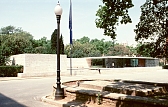
|
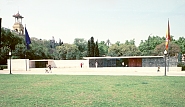
|
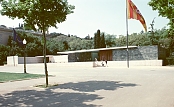
|
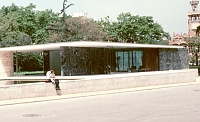
|
Like a Greek temple, the pavilion is raised on a base, in this case of travertine. See also Crown Hall, Illinois Institute of Technology. The main building is on the right half of the base; an oblong reflecting pool and smaller building are on the left half. | |
The staircase--main entranceSee floor plan at this site. |
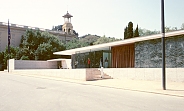
|
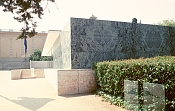 |
The single story building has no real function--it is the exhibit. The plan is asymmetric and fluid with a continuous flow of space. Wall partitions are made of both transparent and opaque glass as well as highly polished marble. The low flat roof is supported by delicate metal supports. As has often been noted, the building has a kind of classical serenity.Views of the right half | ||
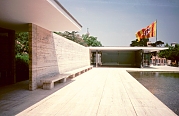
|
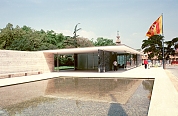
|
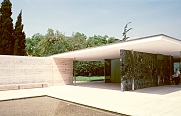
|
Views of the left half | ||
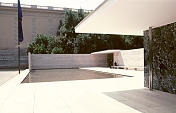
|
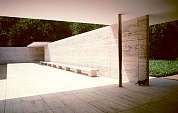
|
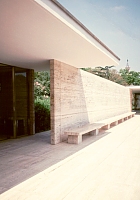
|
 Click here to return to index of art historical sites.
Click here to return to index of art historical sites.
 Click here to return to index of artists and architects.
Click here to return to index of artists and architects.
 Click here to return to chronological index.
Click here to return to chronological index.
 Click here to see the home page of Bluffton College.
Click here to see the home page of Bluffton College.
